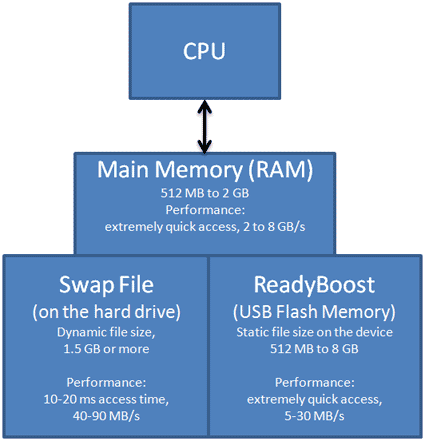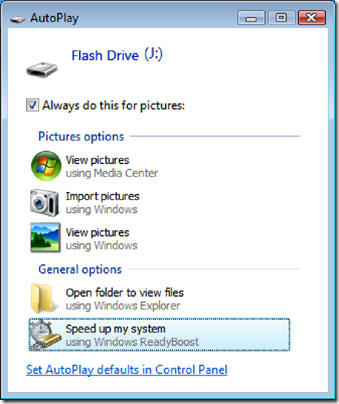Readyboost is a technology introduced in Windows Vista. The motivation behind Readyboost technologies was to provide low-end systems running Windows Vista with better performance ratio by utilizing flash drive caches of up to 4 GB to the system resources.
ReadyBoost allows the expansion of main memory by plugging in a USB 2.0 flash drive. The space in the flash drive is then transparently seen by the system as additional memory. This concept is not something new to Windows, as this has been available for quite some time now, called a page file or a swap file, whose size is configurable in systems starting from NT to XP. The difference is that swap file is dynamic while readyboost space is static and based only on USB flash drives.

People who have experimented using ReadyBoost with Vista report that after a certain point of memory size, ReadyBoost does not provide any noticeable performance improvement. It may actually be worthwhile to spend money on buying more system RAM instead.
In Windows 7, the Readyboost technology will see several enhancements. The 4 GB restriction will be lifted, which means that flash drives with larger capacities will be able to be used as additional cache resources. There will no longer be a limit of only one Readyboost device. So in Windows 7, multiple flash drives can be used for gaining additional cache memory.
The benefit, if at all there is any, will be for Windows-7 based systems that have less than 1 gig of installed RAM, and when using a removable device (USB) with flash memory.
Further reading about Readyboost feature of Windows Vista is available at this URL


![Reblog this post [with Zemanta]](https://img.zemanta.com/reblog_e.png?x-id=7dc0d73a-02c8-4fd0-8e8e-a265bce95458)